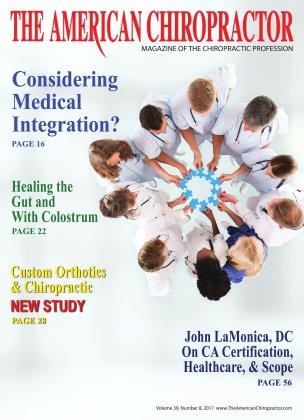Billing and Coding for Extremity Adjustments
CODING
Marty Kotlar
DC, CPCO, CBCS
Question: Dr. Kotlar, I treat a lot of extremity conditions. On some patients, I will adjust multiple extremities. For example, a rotator cuff strain, tennis elbow, sprained hip, and multiple subluxations all on one visit. How do I code and bill for this?
Answer: Let’s begin with a little coding and documentation background. According to the American Medical Association, chiropractic manipulative treatment (CMT) is a form of manual treatment to influence joint and neurophysiological function. The CMT codes include a pre-manipulation patient assessment. Additional evaluation and management (E/M) services may be reported separately using modifier 25, if the patient’s condition requires a separate E/M service beyond the usual preand post-service. The E/M service may be caused or prompted by the same symptoms or condition for which the CMT service was provided. As such, different diagnoses are not required for the reporting of the CMT and E/M service on the same date.
For purposes of CMT, the five spinal regions referred to are the cervical region (includes atlanto-occipital joint); thoracic region (includes costovertebral and costotransverse joints); lumbai' region; sacral region; and pelvic region (sacroiliac joint).
The five extraspinal regions referred to are the head region (including temporomandibular joint, excluding atlanto-occipital); lower extremities; upper extremities; rib cage (excluding costotransverse and costovertebral joints); and abdomen.
CMT Codes:
98940: spinal, 1-2 regions
98941: spinal, 3-4 regions
98942: spinal, 5 regions
98943: extraspinal, 1 or more regions
Common Extremity ICD-10 Codes:
M25.511: Pain, right shoulder M25.512: Pain, left shoulder M75.01: Adhesive capsulitis, right M75.02: Adhesive capsulitis, left M75.51: Bursitis, right shoulder M75.52: Bursitis, left shoulder M77.01: Medial epicondylitis, right M77.02: Medial epicondylitis, left M77.ll: Lateral epicondylitis, right M77.12: Lateral epicondylitis, left G56.01: Carpal tunnel syndrome, right G56.02: Carpal tunnel syndrome, left G56.03: Carpal tunnel syndrome, bilateral M70.71: Bursitis, right hip M70.72: Bursitis, left, hip M76.31: Iliotibial band syndrome, right M76.32: Iliotibial band syndrome, left M76.51: Patellar tendinitis, right M76.52: Patellar, tendinitis, left S76.111_: Strain, quadriceps, right S76.112_: Strain, quadriceps, left M72.2: Plantar fasciitis M77.31: Calcaneal spur, right M77.32: Calcaneal spur, left Q66.51: Congenital flat foot, right Q66.52: Congenital flat foot, left
The answer to your question is to report code 98943, regardless of how many extremities you are treating because the definition of the code states “one or more regions.” In my opinion, this is inaccurate and inappropriate. There should be separate and distinct codes and fees for the evaluation and treatment of extremities based on the number of regions, just like with the spinal manipulation codes.
When documenting and submitting claims for 98943, make sure to have at least the following three items in the patient’s record:
1. The history/subjective complaints;
2. examination findings; and
3. at least one extremity diagnosis.
Marty Kotlar, DC, CPCO, CBCS is the President of Target Coding. Dr. Kotlar is certified in CPT coding, certified in healthcare compliance, and has been helping chiropractors nationwide with billing, [-IIPAA compliance, coding, and documentation for nore than 10 years. Target Codinj~ can be reached at 1-800-270-7044, via the website atwww.TargetCoding.com, or by e-mail at info(xf targetcoding.com. If you would like to receive a sample extremity letter of medical necessity, send an e-mail to infoff targetcoding, com.
 View Full Issue
View Full Issue






